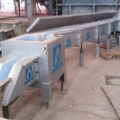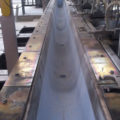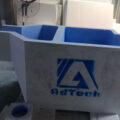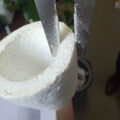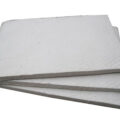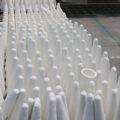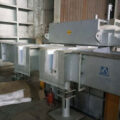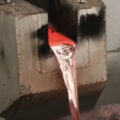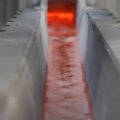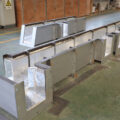As an amorphous refractory material, refractory castables are often used in parts with complex shapes and surfaces, because these parts are not suitable for masonry with refractory bricks, and it is difficult to ensure stability under working conditions. Size and positioning of nails in the refractory castable lining.
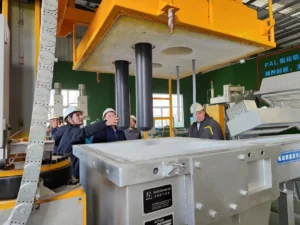
The castable is combined with the shell with the help of nails fixed on the steel shell. In the cement industry, the commonly used heat-resistant steel nails are V-type, Y-type, and L-type. Commonly used materials are 1Cr18Ni19Ti and Cr25Ni20 wait.
In general, steel nails can be made of steel bars made of 1Cr18Ni19Ti. When selecting materials, in addition to considering the high-temperature strength of the material, the destructive expansion of the material due to oxidation and corrosion under high-temperature conditions should also be considered. Although ordinary steel bars in some low-temperature parts can meet the strength requirements at working temperatures, the oxide scale caused by oxidation and corrosion may produce huge expansion stress and swell the refractory castables. Especially in high-temperature areas, such as coal injection pipes and kiln mouth parts, Cr25Ni20 grade heat-resistant steel with higher high-temperature strength should be used to make scraping nails.
On the plane, the nails are distributed according to two square systems with a side length of about 500mm. Any one of the nails on the foot of the square is also located in the center of the other square. The expansion surfaces of the two systems are mutually exclusive. vertical. For surfaces with different shapes, the distribution of nails on the plane should also be considered. However, the design of the lining and the load of the lining material during the production process should also be considered. This may cause the arrangement direction of the nails to be different from the plane. There is a difference and the spacing between nails is shortened. Unless otherwise specified in the final lining coating, the nails are welded to the shell.
The size of the nail must be appropriate, and the head of the nail should have a certain opening to ensure a sufficient area resistant to spalling. The nail should maintain a certain height. If the height is insufficient, the castable on the surface will not be effectively protected and will fall off first. If the rivet is too high, it will cause early burning and abrasion, thus prematurely losing the reinforcing function of the refractory material. There should be a protective layer of 25~30mm behind the nail head.
Before pouring, all spatulas should be coated with asphalt paint or wrapped with plastic film. The free space created after the burning of these materials can ensure that the spatulas that expand due to heat will not cause damage to the castable.
To avoid damage to the castables due to shrinkage during solidification and expansion during heating, for large areas of castables, masonry should be carried out in sequence by dividing cells of a certain length and width (the area of each cell should be within 1.5m2), these communities should be separated from each other by construction joints, and refractory fibers should be filled in them to form de facto expansion joints and cracking control joints. Expansion joints and cracking control joints should avoid important or weak parts, or main stress-bearing parts.
The refractory castables in each community must be poured once. If poured twice, it is difficult to ensure the bonding strength between the two layers of castables.
The surface of the lining must be smooth and flat. Uneven surfaces can cause undesirable accumulation of material, which can lead to blockage and clogging. Special attention should be paid to the cone portion that is prone to clogging. The masonry formwork should have sufficient strength, reliable support, and a smooth surface. The steel formwork should be coated with a release agent, and the wooden formwork should be coated with waterproof paint, or directly laid with a thin film.

